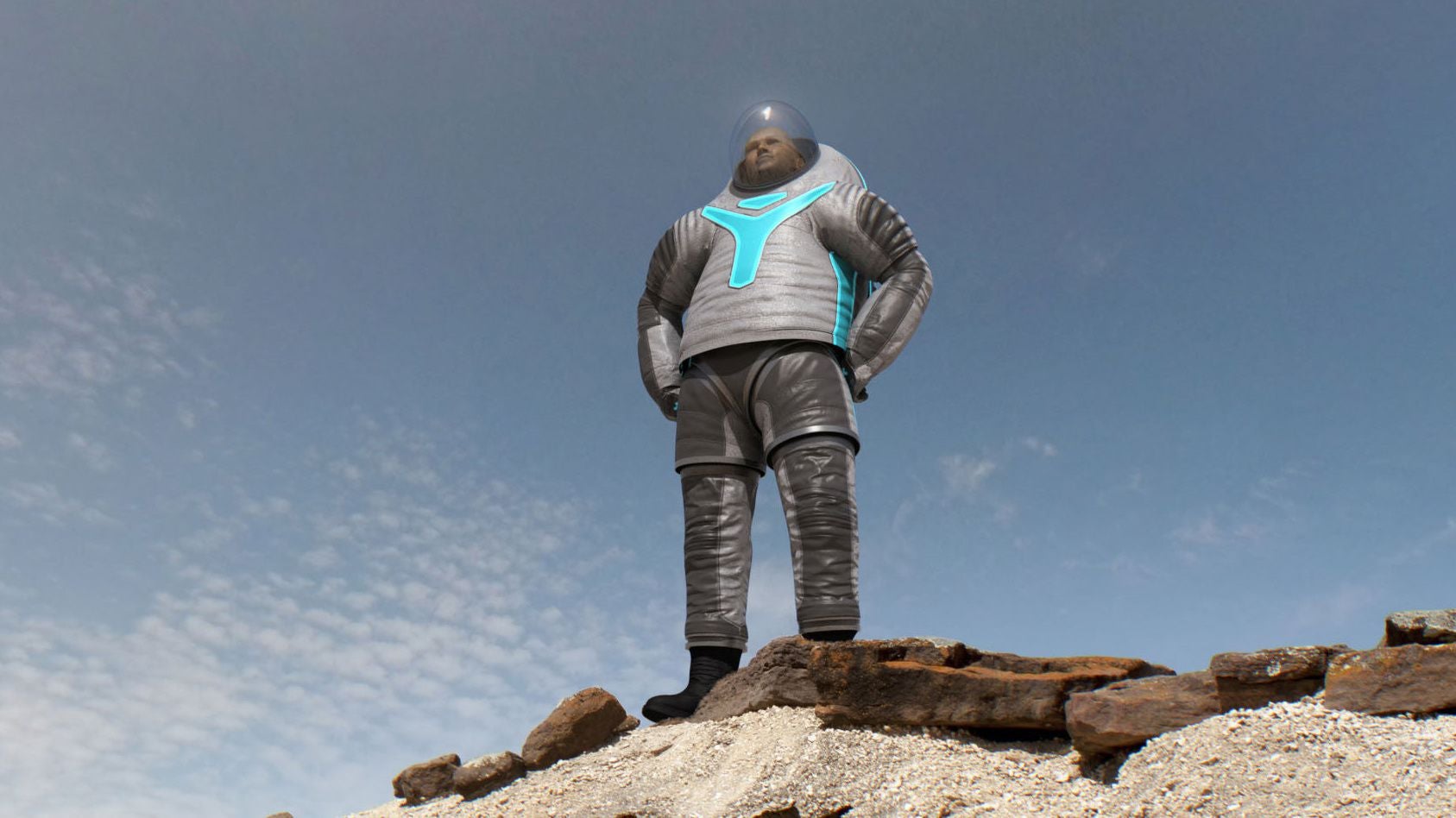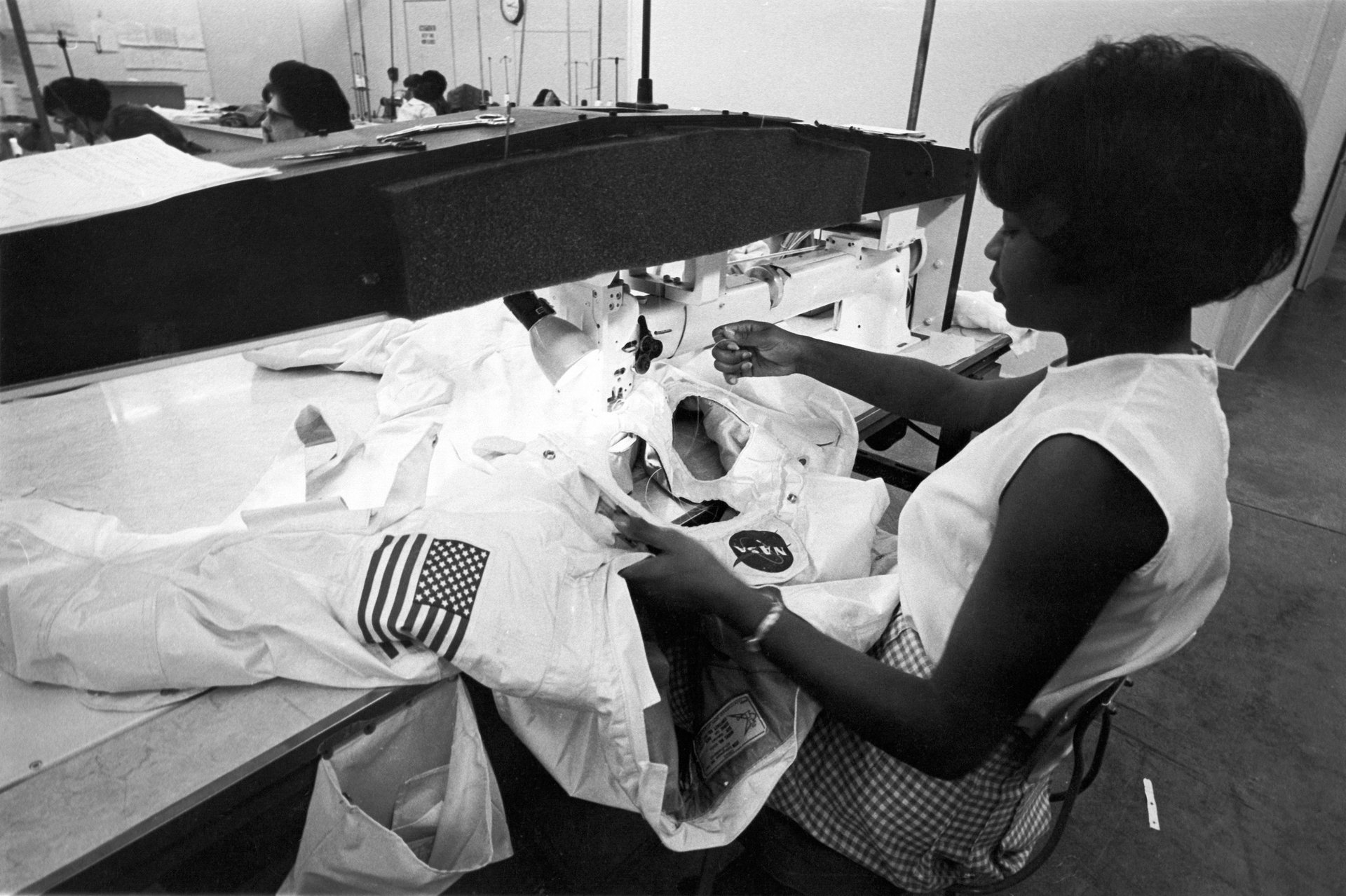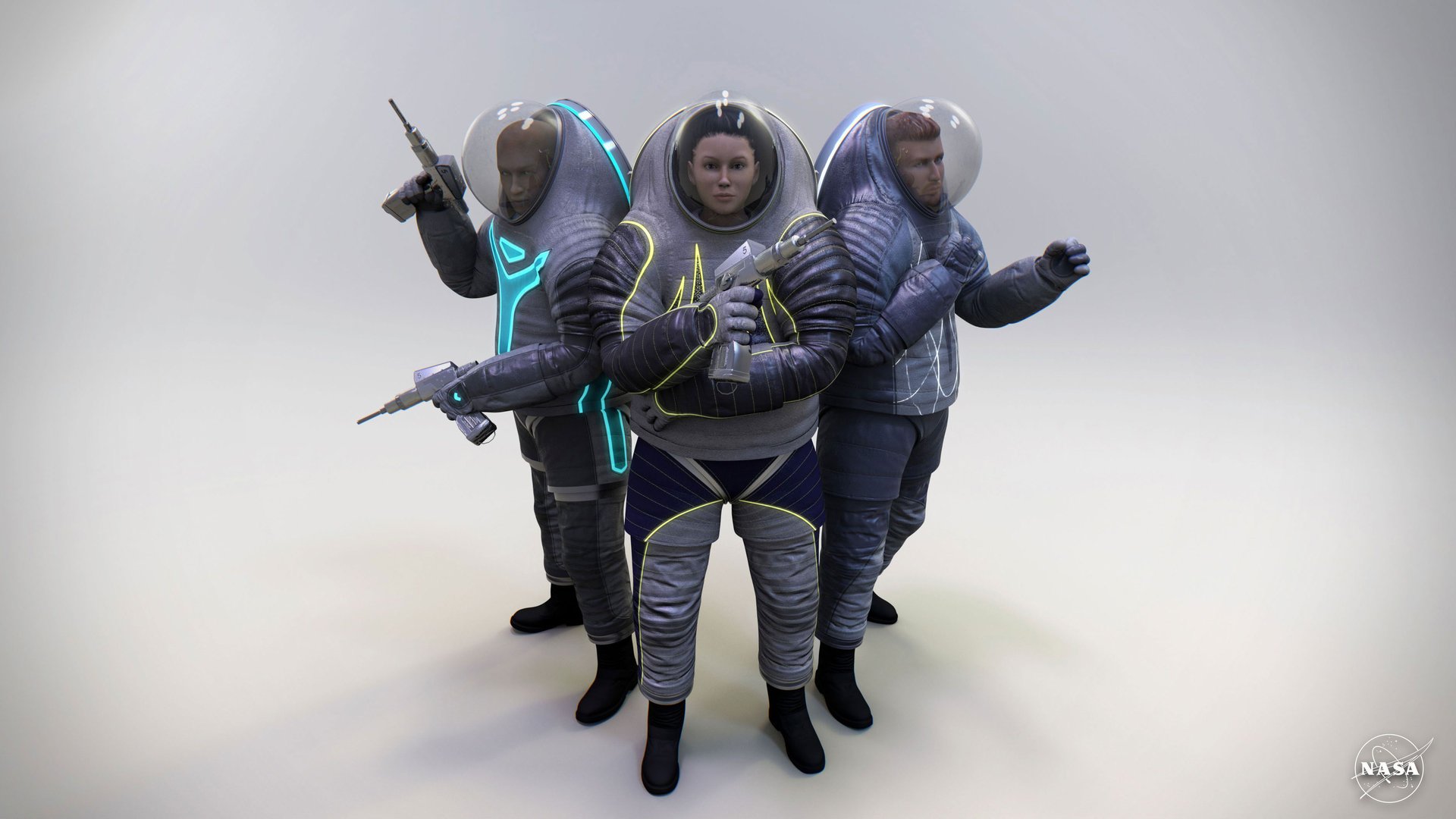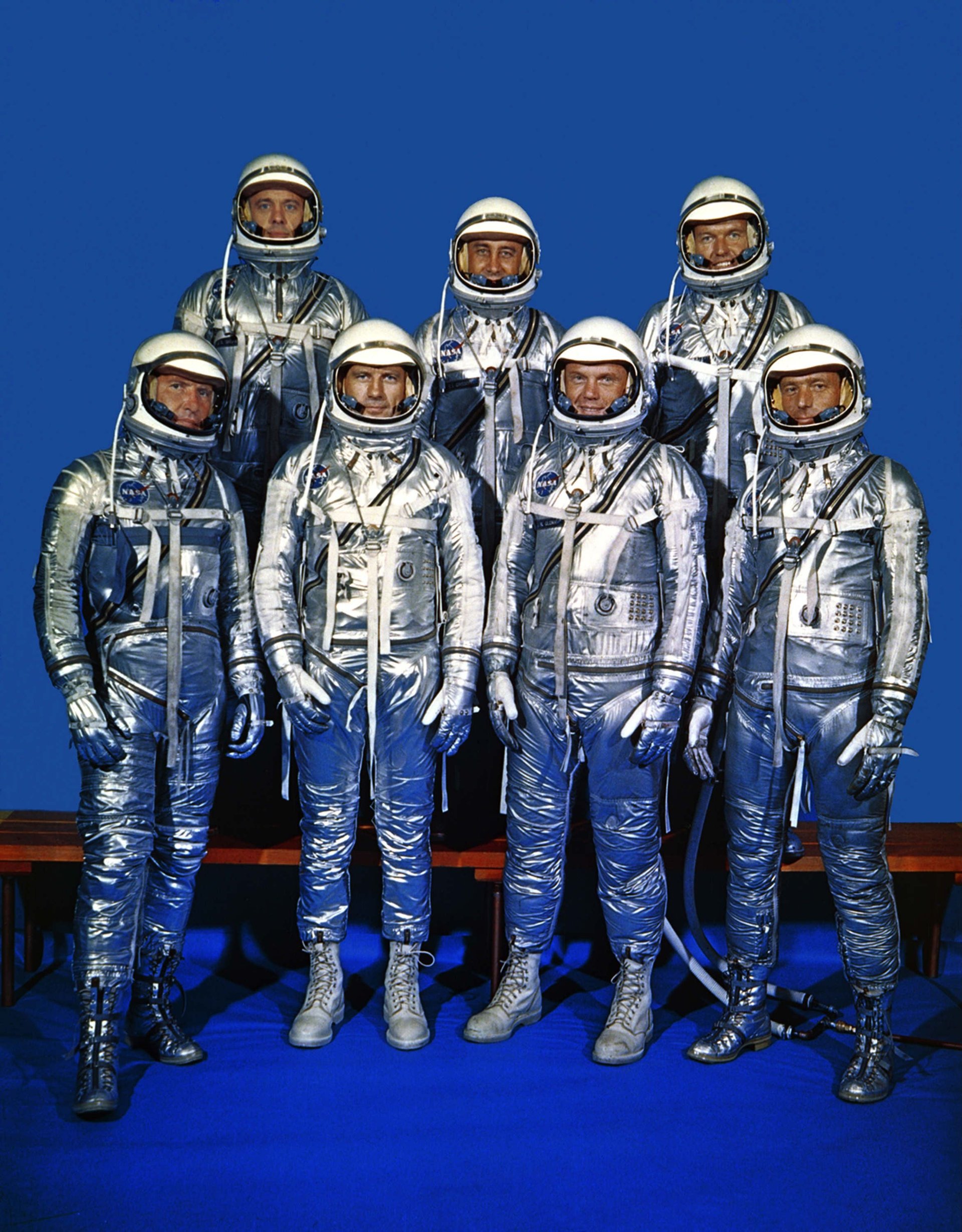How to dress an astronaut
When the first humans left the earth—Pilâtre de Rozier and the Marquis d’Arlandes, riding the Montgolfier brothers’ balloon 900 meters above Paris —they wore the long, ornamental coats, and tricornered hats in fashion for French aristocrats of the time. And when Orville Wright piloted the first manned flight at Kitty Hawk in 1903, he wore the same cap, flannel suit, suspenders, and tie in which he would greet customers at his Dayton, Ohio bicycle shop. In the 20th century, however, adventurers of the heavens would begin to don more specialized gear, culminating in the iconic white spacesuits worn by American astronauts since 1962.

When the first humans left the earth—Pilâtre de Rozier and the Marquis d’Arlandes, riding the Montgolfier brothers’ balloon 900 meters above Paris —they wore the long, ornamental coats, and tricornered hats in fashion for French aristocrats of the time. And when Orville Wright piloted the first manned flight at Kitty Hawk in 1903, he wore the same cap, flannel suit, suspenders, and tie in which he would greet customers at his Dayton, Ohio bicycle shop. In the 20th century, however, adventurers of the heavens would begin to don more specialized gear, culminating in the iconic white spacesuits worn by American astronauts since 1962.
Yet spacesuits are not above fashion. This month, in response to popular coverage of its so-called “Buzz-Lightyear” green-and-white Z-1 prototype, NASA turned to the public to vote on the surface finishes for the Z-1 spacesuit’s successor, the Z-2. Of the three design proposals, one dubbed “Technology” seemed to be the front-runner (against options termed “Biomimicry” and “Trends in Society;” the winner announced will be announced on April 30.)

As well as the futuristic elements common to all three Z-2 proposals (including electroluminescent wire for “astronaut identification,”) the front-running design also harkens back to iconic suits of the 1960s, including patches of metal fabric reminiscent of the “Chromel-R” stainless-steel detailing on Gemini and Apollo suits, where the metal fabric protected against abrasion, and in the case of early Gemini suits, rocket exhaust from an experimental jet-pack.
The experimental Z-2 is but the latest solution to what turns out to be an enormously difficult problem: suiting mankind for space. Like an overinflated basketball, a spacesuit filled with life-giving air wants to be round, rigid, and rock-like. Yet while spacesuits have to be filled with a pressurized atmosphere (neither our lungs, nor any other part of our body do particularly well otherwise), they also have to be comfortable, maneuverable and flexible. Early spacesuits—like the Gemini suit to which the Z-2 “Technology” design harkens—mostly solved this problem by demanding extraordinary efforts of the astronauts who wore them. (Gemini astronaut Gene Cernan sweat so much with the effort of moving his suit during an early spacewalk that several buckets of water were emptied from his rubber-lined suit when he finally made it back to earth.)

Since the days of Apollo, however, astronauts have had slightly more comfortable gear. It was the futuristic Z-2’s manufacturer, ILC Dover, who designed and built the iconic suits worn by Neil Armstrong and Buzz Aldrin on the Moon in 1969. At the time, ILC turned not just to the state-of-the art in engineering, but to its own, more intimate experience of fashion. While now independent, the firm has its origins in a small division of the company best known for its Playtex bras and girdles, whose seamstresses sewed the Apollo suits on standard Singer sewing machines. (The resemblance to earthly fashion was even more than skin-deep; at their core the Apollo suits used the same latex and nylon fabric as the firm’s bras and girdles, molded together into a bellows-like “convolute” that allowed superior flexibility to earlier suit designs.)

Today, the Z-2 is a sophisticated technical artifact drawing on a half-century of NASA and ILC Dover’s experience. Combining soft elements with a hard torso, the suit is particularly notable not only for its unprecedented flexibility and comfort, but also for the fact that it can sustain a much higher interior pressure than its Apollo ancestors—or even the suits worn today on the International Space station. This higher pressure will not just make future astronauts more comfortable, it will also allow them to don the suit quickly and so move more freely between spacecraft and the outside world. (Currently, astronauts need to spend time to acclimate to the lower pressure of a spacesuit’s insides, much like a diver avoiding the bends.) For the ambitious future imagined in the Z-2’s design—a long-term stay on the moon, or a sojourn on Mars—such flexibility will be essential.

Yet if the future sees American astronauts heroically returning to the solar system’s reaches, they will not be sporting any of the designs being polled for the Z-2. Like the Z-1, this suit is an earthbound prototype; the decoration of its spacefaring descendants will be governed, NASA says, by purely “functional” demands. For which there is a historic precedent as well.

When the aerospace industry sought to adapt its experience making high-altitude flight-suits to sell early spacesuits to NASA in the 1960s, it quickly painted military-green flight suits silver, and even gold, to match a Buck-Rogers vision of man in space. The silver spacesuits of Mercury, as a result, were just as much a product of sci-fi style as aerospace substance. It soon became clear, however, that wearing a silver suit on a spacewalk would be something like wearing a disco-ball to a barbecue—the unfiltered sunlight of outer-space would spark a million, blinding reflections from the silver surface. And so functional demands, starting with the Gemini program, led to the all-white surface of all subsequent space-wear. But it was not just NASA astronauts who felt the shift in fashion; shortly after the first images appeared of astronauts in orbit, Buck Rogers himself adopted a white wardrobe in comics and serials.
If science fact sometimes follows science fiction, the reverse is true as well.